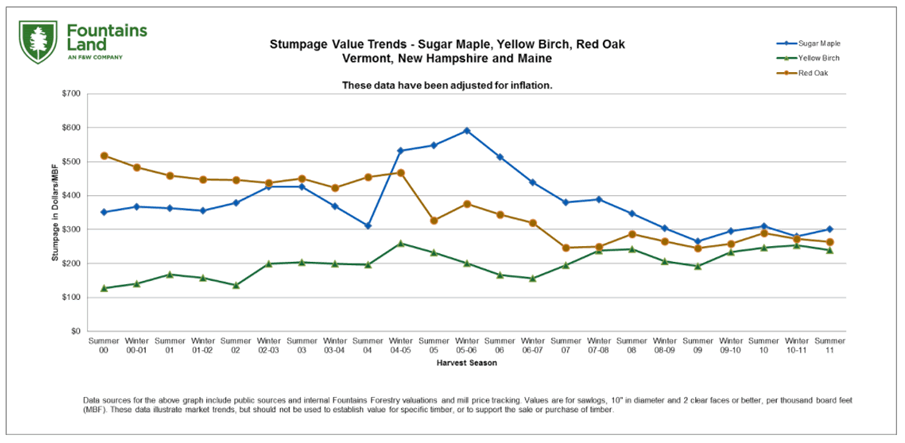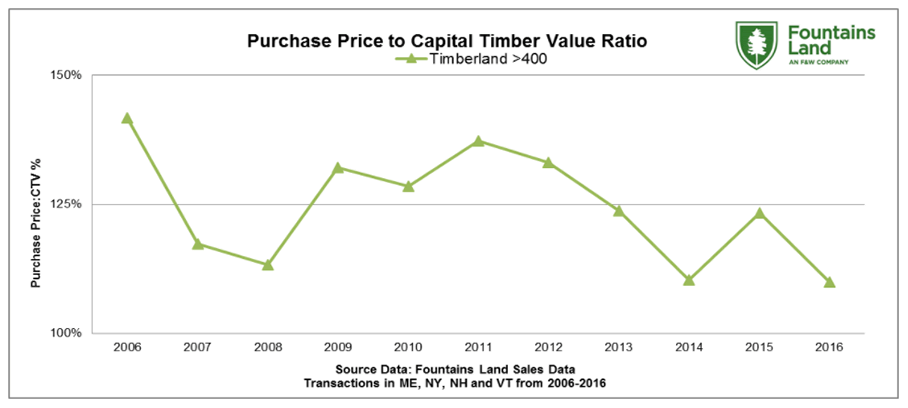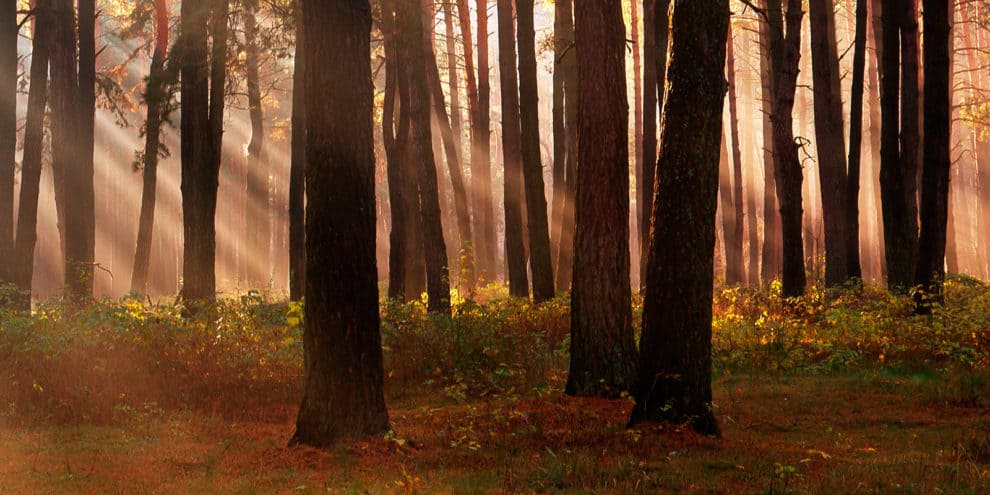The short answer is yes! Now, here is the long answer. Deciding when to invest in timberland for sale depends on many variables including current and future economic trends (nationally and globally), the direction of inflation, housing starts and regional timberland markets, to name a few. If we focus on the northeastern U.S. (particularly northern New England and New York) and historic price trends for some of the main hardwood species, we can conclude that now is a perfect time to acquire timberland as an investment.
First, a definition: “stumpage” is the value of standing timber, or the price that a logger or forest products company would pay the landowner for his/her timber “on the stump.”
If we look at historic stumpage data for some Northeast species, there is a general softening of pricing since 2006, with a modest rebound since late 2009. The graphic below depicts average stumpage for sugar maple, yellow birch and red oak since 2000. This general trend has been similar for many other commonly occurring species within the region, although not for all.

This downward trend in stumpage value is roughly mirrored by the average market value at which northeastern timberland has traded since 2006 (with some exceptions). The graphic below depicts the average purchase price to capital timber value ratio (PP:CTV) that timberland has traded for in sales conducted by Fountains Land.

Our sales data shows a significant drop in the PP:CTV ratio from 2006 to the early days of the great recession. However, unlike the slide of stumpage values during the recession, this market value indicator maintained a steady ratio during the recession. One explanation of this steadiness is investors’ desire to have safe, hard assets during the unstable period. However, as the country began to pull out of the recession, investors moved to other investment options, creating a gap between supply and demand for timberland. As a result, there has been a modest fall in timberland values since 2013.
If we look at current stumpage values for key hardwood species in the Northeast relative to historic trends, it is quite possible there will be future rises in stumpage values (especially if inflation rises and the economy remains healthy). Also, as we look at the current low market values for timberland relative to historic trends, investors can expect to acquire timberland at prices in line with timberland appreciation fundamentals (physical growth, stumpage appreciation and product shifting).
Therefore, we feel it is an exceptional time to consider northeastern timberland as an investment.
Written by Michael Tragner, a professional forester and timberland broker with Fountains Land who has served timberland owners and buyers in the northeast since 1989.
This content may not be used or reproduced in any manner whatsoever, in part or in whole, without written permission of LANDTHINK. Use of this content without permission is a violation of federal copyright law. The articles, posts, comments, opinions and information provided by LANDTHINK are for informational and research purposes only and DOES NOT substitute or coincide with the advice of an attorney, accountant, real estate broker or any other licensed real estate professional. LANDTHINK strongly advises visitors and readers to seek their own professional guidance and advice related to buying, investing in or selling real estate.










Add Comment